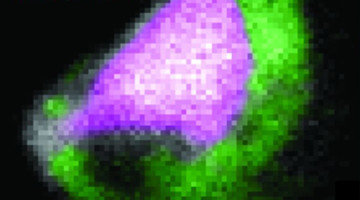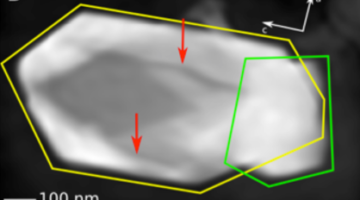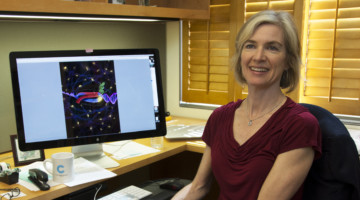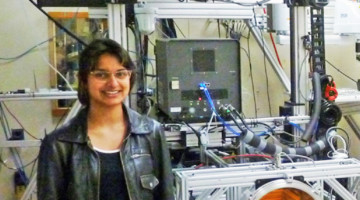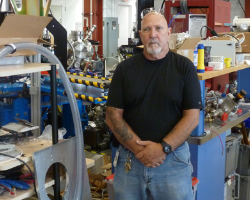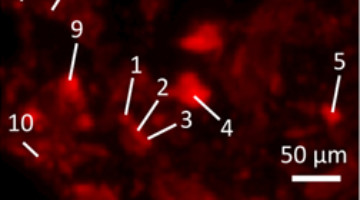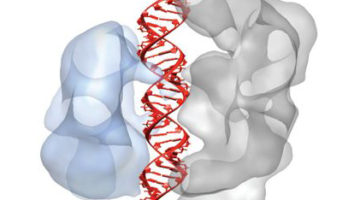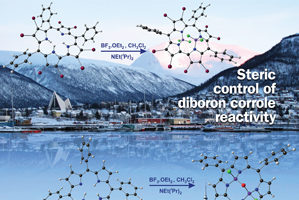New studies of space dust captured by NASA’s Stardust Interstellar Dust Collector have shown that interstellar particles may be much more complex in structure and composition than previously thought. Read more »![]()
![]()
All News & Updates
Ptychography: A Fun Word with Big Promise
We recently sat down with ALS physicist David Shapiro, lead author on the paper reporting this research in Nature Photonics, to talk about ptychography and why the ALS is uniquely suited to work on this next-generation technique. Read more »
Caribou Biosciences Has Roots at the ALS
When Rachel Haurwitz joined UC Berkeley biology professor Jennifer Doudna’s lab in 2007 as a graduate student, little did the two women know that the interesting bacterial immune system they were studying would be the subject of news headlines and the basis for a biotech startup just a few years later.
Infrared Mapping Helps Optimize Catalytic Reactions
A pathway to more effective and efficient synthesis of pharmaceuticals and other flow-reactor chemical products has been opened by a study in which, for the first time, the catalytic reactivity inside a microreactor was mapped in high resolution from start to finish. Read more »![]()
![]()
Validating Computer-Designed Proteins for Vaccines
Computationally designed proteins that accurately mimic key viral structures can help produce better vaccines. The resulting protein structures, validated at the ALS, encourage the further development of this strategy for a variety of vaccine targets, including HIV and influenza. Read more »![]()
![]()
Student UEC Member Goes Above and Beyond
As a student representative to the ALS Users Executive Committee (UEC) for the past two years, Mahati Chintapalli has gained a better understanding of how the ALS functions as an organization, while the UEC has gained a devoted and outgoing member. She’s currently a PhD student in Materials Science and has been conducting research at the ALS since 2011. Read more »
Monroe Thomas, Mechanical Technician
The weekend before the ALS was scheduled to start up again after the most recent shutdown, mechanical technician Monroe Thomas kept things running on schedule by coming in on a Saturday to pull a 300-pound capacitor “uphill” out of the new RF power supply. It’s just another “(not so) typical” day at work for him, he says. But it’s his reliability operating cranes and supervising moves of heavy equipment around the ALS that plays an integral role in keeping the facility going. Read more »
Iron is the Key to Preserving Dinosaur Soft Tissue
Researchers studying organic material from dinosaur bones have been able to show that the samples contained original soft tissue material from Mesozoic dinosaurs. The x-ray techniques at the ALS were key to showing a possible mechanism for this unexpected preservation.
Read more »![]()
![]()
Intriguing DNA Editor Has a Structural Trigger
The molecular structures of two proteins from a family of genome-editing enzymes reveal how they target and cleave DNA. The results point the way to the rational design of new and improved versions of the enzymes for basic research and genetic engineering. Read more »![]()
![]()
Mono- and Diboron Corroles: Factors Controlling Stoichiometry and Hydrolytic Reactivity
The synthesis and structural characterization of a diboryl triaryloctabromocorrole complex fills in a missing link in the family of diboron porphyrinoids. DFT calculations suggest that a strongly electron-withdrawing corrole ligand is required to stabilize the diboryl complex relative to the partially hydrolyzed diboron corrole complexes previously observed. New monoboryl corrole complexes are described, which do not have counterparts in porphyrin chemistry and are stabilized by internal F···H hydrogen bonding. Read more »
- « Previous Page
- 1
- …
- 129
- 130
- 131
- 132
- 133
- …
- 139
- Next Page »
